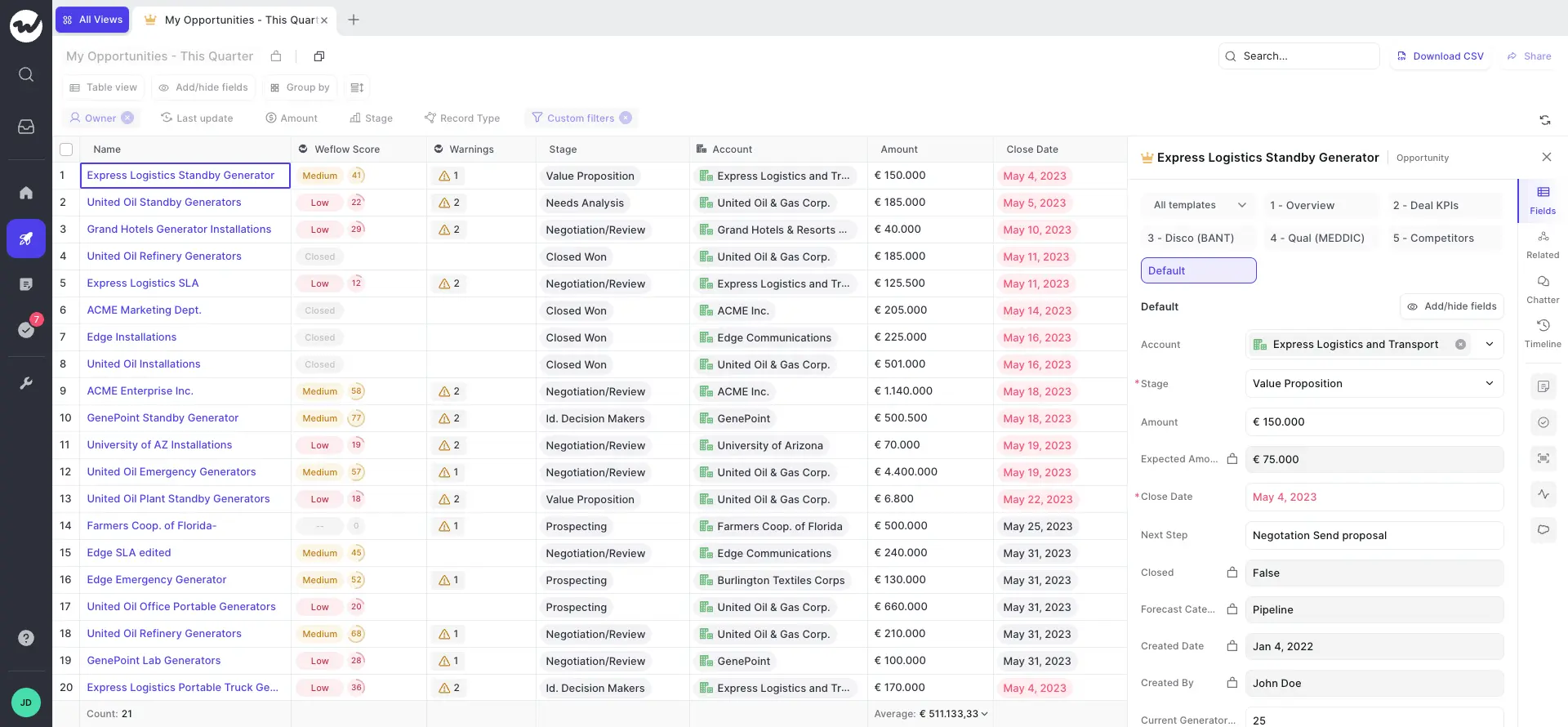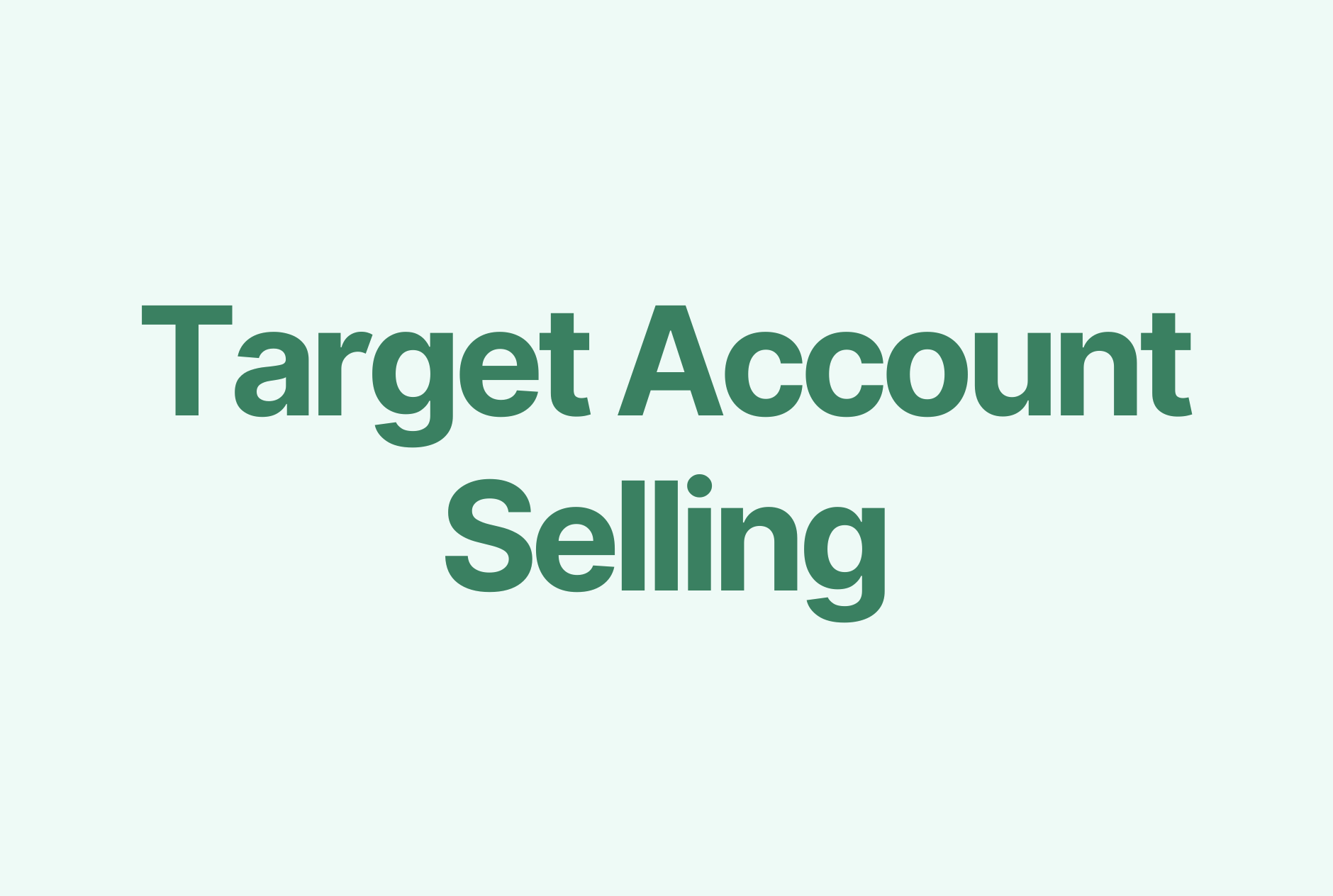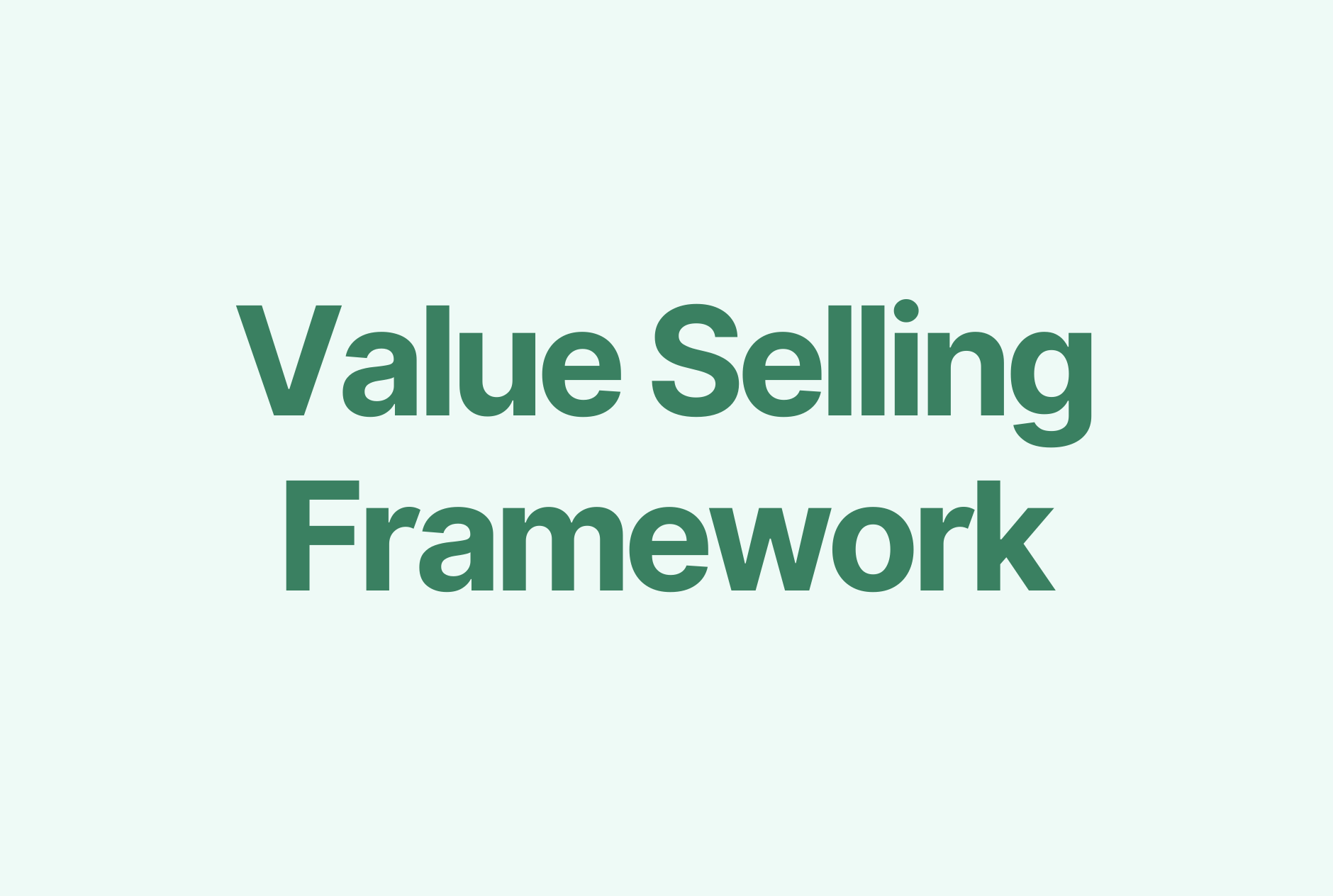Question-Based Selling: Everything You Need to Know

The key to a successful sales process is to get to know your customer better. In order to close deals efficiently, you need to understand the unique challenges prospects are facing, what they’re hoping to accomplish, and what is standing in their way of reaching those goals alone.
When you have the right information, you can make stronger recommendations that lead to long-lasting relationships and repeat business. But to get the information you need, you'll have to ask the right questions.
Questions are common in any sales methodology, but Question-Based Selling takes it to a whole new level. Here’s a rundown of what Question-Based Selling is, how it works, and how your sales team (and your customers) can benefit from it.
What is Question-Based Selling?
Question-Based Selling is a sales methodology outlined by Thomas Freese in his book Secrets of Question-Based Selling. Freese says that the key to success in sales isn’t writing the right pitch — it’s asking the right questions.
Question-Based Selling focuses on the questions you ask, how you ask them, and when they're asked. By getting to know your prospect (and hopefully, your future customer) through open-ended questions, you can guide them to the conclusion that they need what you have to offer.
This framework is similar to other customer-focused sales techniques (like customer-centric selling) in that you should focus on what your prospect needs, not necessarily what you want to sell. Instead of delivering a one-size-fits-all pitch, Question-Based Selling encourages sales professionals to know who they’re talking to before trying to close a deal.
The benefits of Question-Based Selling
With so many sales methodologies out there, why choose Question-Based Selling? Here are some of the biggest benefits that make Question-Based Selling a powerful tool for sellers:
1. Engaged prospects and customers
When you focus on your prospects during the sales process, you encourage them to open up about their challenges and goals. You’re building a dialogue and a rapport that can lead to increasing the prospect's interest in your offering and result in stronger long-term relationships.
Because prospects are engaged early, they become more engaged customers. They’re more likely to come to you with new issues that come up or new problems they’re facing, which leads to more sales conversations and puts you in a position to help them solve not only today’s challenges, but tomorrow’s challenges as well.
2. Long-lasting, trusting customer relationships
Prioritizing your customer shows them they’re more than just another sale. When you care more about giving them the solution they need to achieve their goals than you do about meeting a quota or making a commission, they’ll have greater trust in you and your team.
Customers know they can come to you for personalized recommendations and advice and will continue to buy from you again and again — and they’ll be more likely to send friends, family, and business partners your way.
3. Deals closed more efficiently
Question-Based Selling helps close deals with prospects faster by allowing them to talk through their challenges and needs during a sales conversation, setting the scene for you to make a more specific pitch that aligns with what they’re looking for. It makes it easier for prospects to see how your offering can help them achieve their goals, which means that they can make smarter (and faster) decisions.
But this methodology also makes it easier to close more deals long-term. When your customers already trust you, and you have that long-term relationship established, you can more efficiently resell or upsell customers.
4. More productive sales teams
Working more efficiently and creating stronger relationships with customers can increase team productivity, helping them get more done in less time. By asking the right questions and investing in a long-term connection early on in the sales process, your sales team will save time later on.
Because Question-Based Selling encourages prospects and customers to do most of the talking, sales teams can spend less time pitching and educating their audience. Instead, they can focus their messages to make the most impact.
How to get started with Question-Based Selling
Ready to give Question-Based Selling a shot? Here’s how to get started.
1. Know what the “right questions” are
There isn’t a standardized list of the “right questions” to ask every prospect. The questions that you need to ask will vary depending on the person you’re talking to.
The goal of Question-Based Selling is to get your prospect to open up about themselves and tell you about their needs, challenges, goals, and opportunities they see. The questions you ask should encourage them to keep the conversation going and push them to look deeper into their situation.
The right questions focus on:
Getting the customer to open up about their goals
Knowing the prospect's initial goal is important, but you want more than just a surface-level understanding. The right questions encourage the customer to think about the future and what accomplishing this goal really means to them.
For example, a prospect’s goal might be to reduce support response time to customers. But when they start to dig deeper, their goal isn’t just about speed and productivity — it’s about delivering a superior service to their customers. A solution that only solves the initial delay problem might bring them one step closer, but it might not be the right solution for their long-term needs.
The right questions should help them crack through that initial surface-level idea to get them thinking about their long-term needs and how the solution they choose today might contribute to achieving those.
Try these examples:
- What is your biggest need today? Why is this need important to you and your team?
- What are the other goals your team is trying to achieve? Why is this more important than the others?
- What are the larger business goals your team is hoping to achieve?
- How would achieving this goal bring you closer to your overall business goals?
- What happens when you achieve this goal? What comes next?
- Does the rest of your company or team see the importance of this goal? Are there other goals that are equally important to them?
The benefits, outcomes, or value associated with a solution
Most goals prospects or customers are trying to achieve come with some benefit, value, or a desired outcome attached. When they achieve X, they will get Y. Once you have an idea of the goal (and future goals) your prospect wants to achieve, you want to get to know the specific outcome they’re looking for.
In the example we used in the last section, the short-term goal was to reduce support response time, while the long-term goal was to provide a better customer experience. The benefit or outcome that your prospect might be looking for could be more loyal customers, repeat buyers, or a strong brand reputation.
The right questions will help you dig deeper to figure out why that goal is really important to them and their team. When you know what they value or the benefits they’re after, your solution recommendations will be stronger.
Here are some examples of questions you might ask:
- What is your ideal outcome from achieving this goal?
- What would achieving this goal help you accomplish?
- How would you benefit from achieving this goal? How would your team benefit?
- How would achieving this goal put your team in a better position than they are today?
The unique roadblocks or hurdles preventing them from achieving those goals
If they understand what they want to accomplish, there is most likely a reason they haven’t been successful yet. It could be that they don’t have the right budget, access to the right tool, or they’re struggling to get their team on board to make the appropriate changes.
Going back to our example, the prospect may not have the right software to speed up their support times. They may also struggle to educate their support team members to provide accurate advice and direction quickly and efficiently, or their support team might not be big enough to handle all their tickets.
Understanding where they’re being held back prevents you from offering generic advice they might have already tried or offering a solution they know won’t work for them. Again, asking the right questions will lead to better recommendations.
Here are some questions to get you started:
- Have you tried to achieve this goal? Why weren’t you successful?
- What solutions have you tried on your journey to making this goal a reality? Where did they fail? Where did they succeed?
- Is there anyone on your team who disagrees with this goal? Who? Why don’t they agree?
- What challenges might arise as you get closer to achieving your long-term goals?
- If you achieve this goal, what new hurdles might appear?
2. Prepare open-ended questions
Now that you have a better understanding of what the “right” questions are, you can start to prepare some open-ended questions. While the bulk of the questions you ask should be influenced by the direction of the conversation, having a few questions prepared can help get the ball rolling in the right direction.
Do as much research as possible on your prospect, their company, and the industry they serve. Look at their social media profiles, company website, and third-party publications or news sites to get a better understanding of the challenges the industry is facing and what the future holds. You might even revisit previous conversations you’ve had with similar companies.
Make a list of at least three open-ended questions to get your conversation started (the examples mentioned above are a great starting point). Focus on the Five Ws (Who, What, When, Where, and Why) and try to avoid any questions that can be answered with a simple yes or no.
3. Prioritize listening
With Question-Based Selling, you’re here to move the conversation along and understand your prospect — not just give the illusion of caring before hitting them with a generic pitch. That means you need to prioritize listening, not selling.
Focus on engaging your customer in a conversation about them. Your questions should flow with the conversation, building off something they had said previously. Question-Based Selling shouldn’t feel like an interrogation or an interview. Instead, it should feel like you’re truly invested in getting to know your prospect and the business they work for.
When the time comes to make a recommendation, refer back to the points your prospect has made to explain why you think this is the right solution for them. Using specific examples and referencing the challenges they’ve established or the frustrations they’ve felt can help you explain exactly why you think this solution is right for them.
And on the other hand, if a prospect isn’t the right fit for your business, be upfront about it. You can’t be the right solution for everyone, but showing that you listened to their needs and recommending a product or service that meets those (even if it isn’t yours) can prove you’re trustworthy and willing to help. They’ll come back if you’re ever a fit or refer their connections your way.
Be sure to take notes during all your conversations. You can refer back to these points during follow-ups and check-ins, helping you build trust and keeping the conversation moving in the right direction.
Operationalize Question-Based Selling with Weflow
Operationalizing sales methodologies like Question-Based Selling can be hard. Sales reps won’t follow the methodology consistently, and managers won’t enforce it.
This will result in the team missing the data that’s needed to successfully manage the success criteria of each opportunity.
Weflow offers note templates that can help streamline Question-Based Selling and enable you to have a consistent sales process. It only takes seconds to create a note template that can be reused by your entire team.

Weflow also enables RevOps to set up central pipeline views and field templates to focus reps on fields that need to be populated at each stage of the sales process.

Ready to implement Question-Based Selling? Get started with Weflow today.
Close more deals with Question-Based Selling
Asking the right questions at the right time is the best way to truly aid in the success of your prospects and customers and can significantly boost your average success rate. When you fully understand where they are and where they want to go, you can recommend solutions that align with their needs and expectations.










.png)

.png)
.png)